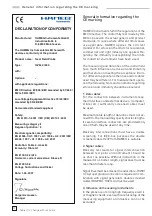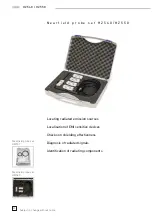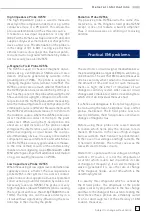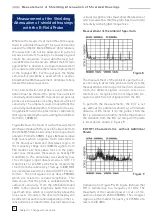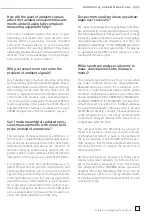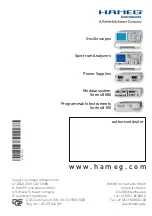
8
Subject to change without notice
Practical EMI problems
P r a c t i c a l E M I p r o b l e m s
The majority of such probes suffer from a disad-
vantage: their spatial resolution is very limited.
It is hence difficult to locate the source of the
measured signal. Therefore, when shopping for a
probe, it is advisable to look especially for a probe
with high resolution of the magnetic field. This
becomes ever more important as the degree of
integration on EC boards increases so that loca-
lizing individual sources of interference requires
resolution down to millimeters.
Measurements on 4 layer EC boards
using HM554
The following describes how to extract interesting
details from the probe signals. Principally the
signals may be displayed in the time or frequen-
cy domains. The displayvs. time may be more
transparent. The following measurements were
taken from a layer EC board of „Europe” format
100 x 160 mm square. The power distribution on
this board is on individual layers. The distance
between the Vcc- and groundlayers is 100 µm.
In the middle of this board a set of capacitors is
located which connect both layers for AC.
Picture 1: Current signal in the Vcclayer and
close to the Vccpin of a 74AC163.
Picture 1 shows the current signal in the vicinity
of the Vccpin of a 7AC16. The signal amplitude is
proportional to the rate of change of the magnetic
field and thus of the current at this location of the
layer. The rise and fall times are in the subnano-
second range.
The reason is that the high frequency currents will
flow mostly close to the V
cc
pin as they can only be
fed from the charge of the layers there. Such high
frequency components can not be fetched far as
the impedance would become too high. There is
no bypassing capacitor at the V
cc
pin as it would
not be able to deliver high frequency current. Of
course, the two layers V
cc
and ground have a set of
capacitors in the middle of the board. But this set
can only deliver the low frequency components.
Picture 2: Current changes in the power distribu-
tionlayers close to the set of capacitors.
Picture shows the current changes in the vici-
nity of this set of capacitors. It is obvious that this
signal is much slower than that of picture 1. Here
the rise and fall times are approx. ns. The set
of capacitors can only deliver current slowly to
the layers. Such details are only visible with high
resolution probes such as the µH field probe.
The following example demonstrates the effect of
absorption measures. In picture the signal was
taken directly at the V
cc
pin of a 7AC00 using the
µH field probe. This IC is powered by a V
cc
-ground
system which is un damped. The changes of the
magneticfield are strong.







